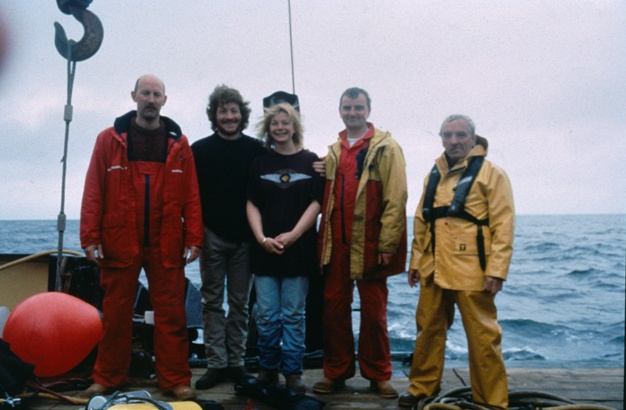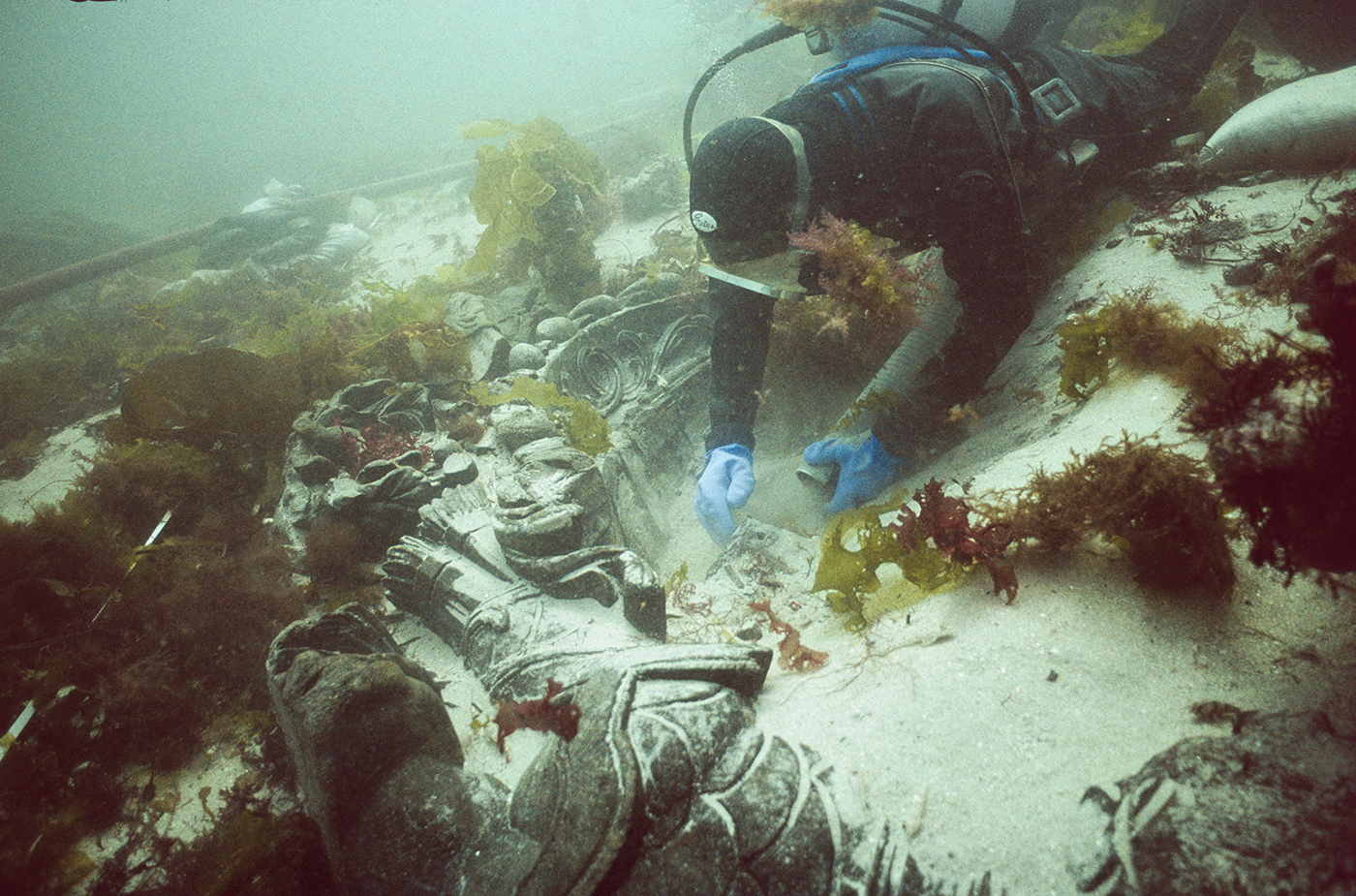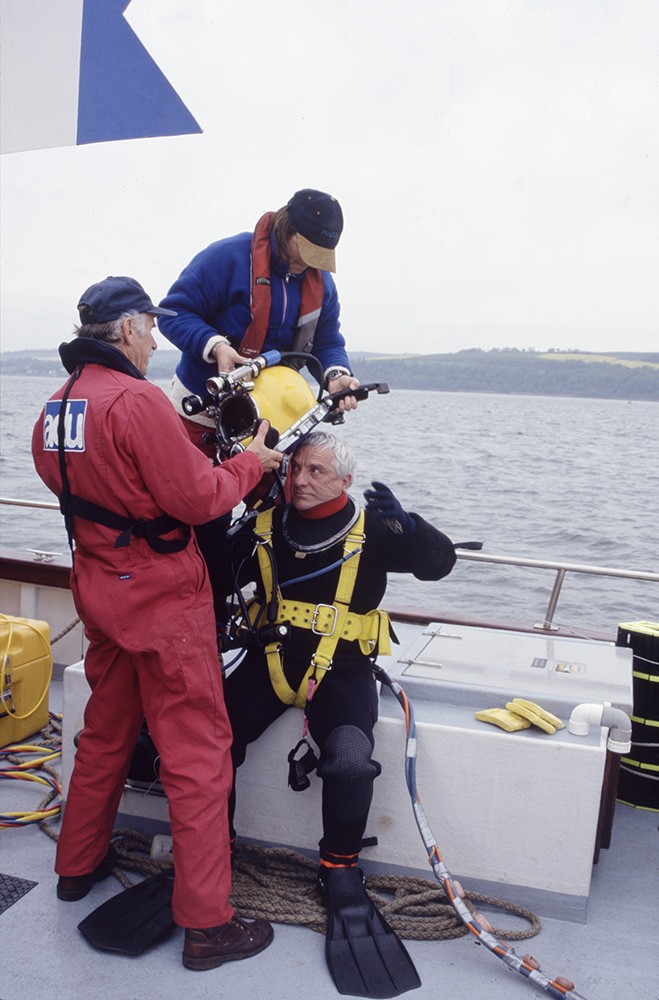A new resource for researchers and designated wreck licensees has just been made available through English Heritage Archives. The Archaeological Diving Unit’s collection regarding British shipwrecks has been catalogued and can now be searched through the English Heritage Archives online catalogue and viewed no charge at the Archive Services in Swindon. The large collection of paper records, digital data, videos and slides have been researched and carefully catalogued allowing researchers to identify the records that they are interested in before either ordering a copy or viewing for free at the Swindon Archives Facility. In addition to the catalogue that has been created another important aspect of this project was to digitise the hundreds of dive videos that were in outdated formats. These can now also be searched via the catalogue and either copies ordered or they can be viewed at no cost in person at Swindon.
In 1986, the Archaeological Diving Unit (ADU) at the University of St Andrews, Scotland, was awarded the government contract to investigate shipwrecks in need of legal protection within the 12-nautical mile limit of the United Kingdom coastline. For the next 17 years the dive team surveyed, excavated and monitored wrecks designated under the Protection of Wrecks Act 1973 and undesignated wrecks to determine if they needed legal protection.

During this process, a large archive of paper documents, video and cassette tapes, slides and photographs was created relating to the archaeological investigation of British shipwrecks. Not only is there material relating to the ADU’s diving activities in this collection, there are also licensees’ reports, site data and photographs which were used as research tools for the group themselves. Examples of archive material include: original site plans, behind the scenes footage of Time Team on the HMS Colossus, ADU diver log books, Hanover Cove wreck correspondence, all ADU reports, HMS Eagle designation application, newspaper clippings and Goodwin Sands geophysics survey data.


For the last six months Peta Knott from Wessex Archaeology has been organising, researching and cataloguing the ADU collection for English Heritage. Part of this task was also having the ADU’s Hi8, DV and VHS tapes converted to digital format and then checking the content and quality of hundreds of these tapes… in fast forward! While this footage records the regular monitoring dives and occasional site excavations completed by the ADU they also show how sites have changed over time. More than 3800 slides in the collection record the earlier state of preservation of these wrecks allowing comparison with their current condition. These audio visual components of the archive could be used to monitor changes to various wreck sites over the years or to compile a history of investigations on certain wrecks.
While skimming through the correspondence, sorting through the slides and watching discoveries being made on the underwater videos, Peta gained an insight into the ADU staff, licensees and other personalities involved with investigating shipwrecks during the 1980s and 1990s. As a whole, the ADU collection is really a snapshot into the early days of marine archaeology in England and is a glimpse into the characters that developed this burgeoning discipline.
Search it for yourself at http://www.englishheritagearchives.org.uk/
A Quick Search for ‘Archaeological Diving Unit’ will bring up all 1076 records and can be used in conjunction with a specific shipwreck name.
By Peta Knott, Archaeologist - Coastal & Marine